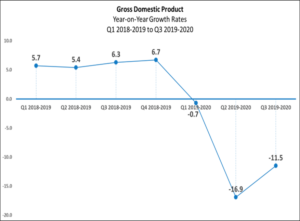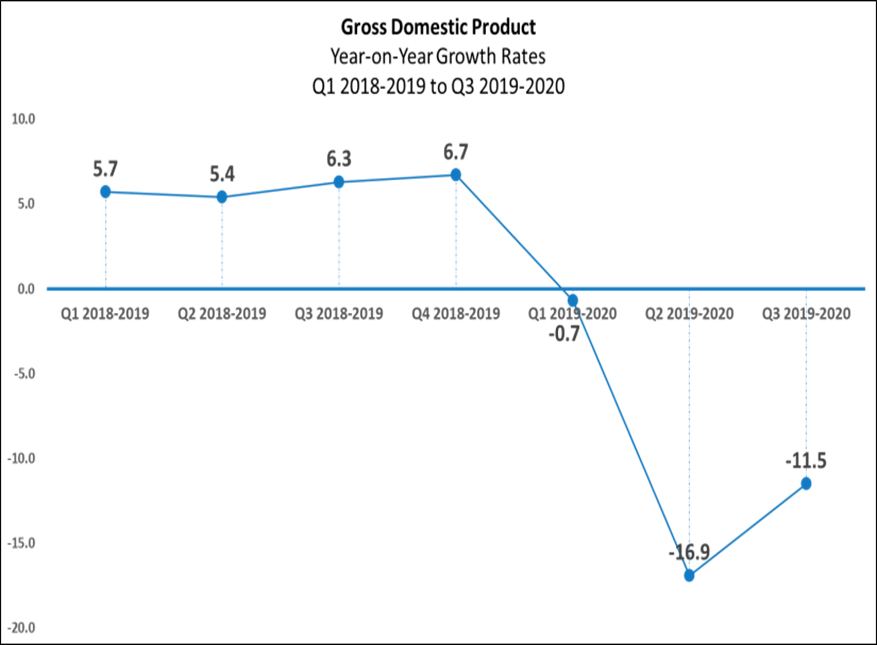-
The Philippines’ GDP declined 11.5% in the third quarter of 2020, slower than the 16.9% contraction in the second quarter
-
Households and firms have begun to recover, with smaller contractions in household consumption, firm investments, exports, and imports
-
Agriculture growth slowed to 1.2%, as the sector faced a number of plant and animal diseases

The Philippine economy contracted at a slower rate of 11.5% in the third quarter of 2020 from its record plunge in the second quarter as more economic activities returned during the period.
The third quarter decline in gross domestic product (GDP) was slower than the second quarter’s 16.9% contraction, the country’s lowest recorded quarterly growth since 1981 that brought the country into technical recession.
Economic managers, in a joint statement, said the double-digit contraction in the third quarter “is not surprising given the return to more stringent quarantine measures in NCR and neighboring provinces, and Cebu City, which together account for around 60% of the Philippine economy.”
In addition, public transportation was restricted, preventing many Filipinos from leaving their homes and reporting for work even if their industries were allowed to operate.
But Acting Socioeconomic Planning Secretary Karl Kendrick Chua, Finance Secretary Carlos Dominguez III, and Budget and Management Secretary Wendel Avisado said they are “optimistic that the worst is over for the country”.
They said the economy “has begun to recover” as GDP grew by 8% in the third quarter on a quarter-on-quarter basis, reflecting the return of economic activities as the quarantine was eased.
On the expenditure side, households and firms have begun to recover, with smaller contractions in household consumption, firm investments, exports, and imports.
In particular, goods exports grew by a positive 2.2% in September, as the economy of major trading partners in the region, notably China, recovered.
Government consumption growth slowed to 5.8% as the Bayanihan to Recover as One bill was still pending in Congress at that time.
According to the Department of Budget and Management, actual infrastructure disbursement in the third quarter exceeded programmed levels by 12.1%, although this was lower than third quarter levels in 2019 by 28% in real terms.
Economic managers said this was not surprising given the catch-up spending carried out in the second half of last year after the late passage of the 2019 budget.
On the supply side, agriculture growth slowed to 1.2%, as the sector faced a number of plant and animal diseases.
“These headwinds, however, had minimal effects on overall food supply as evidenced by falling food inflation in the same period,” economic managers said.
Both industry and services also showed a smaller contraction, consistent with the initial recovery of employment, in which some 7.5 million workers returned to work in the third quarter. This reduced the unemployment rate to 10% in July from 17.7% in April, when the quarantine was at its strictest.
The Cabinet has recently approved measures to further open up the economy in the fourth quarter, subject to enforcing the minimum health standards and enhancing the Prevent, Detect, Isolate, Treat, Reintegrate strategy.





